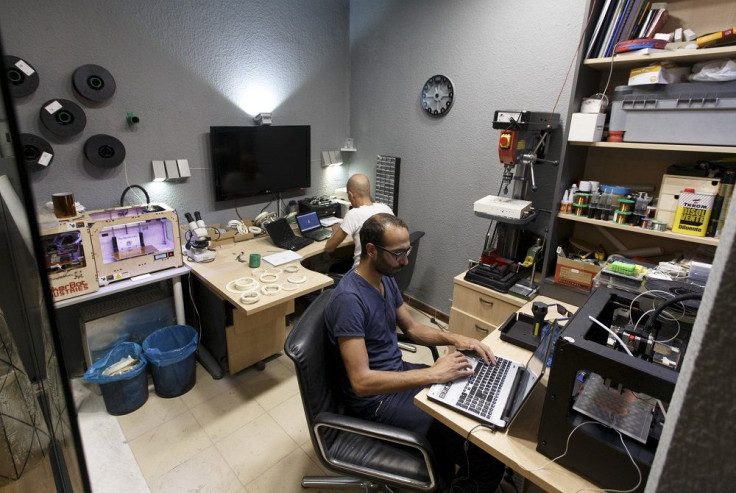Researchers successfully make magnets out of two non-magnetic metals, copper and manganese

Copper and manganese now have the ability to become ferromagnets or permanent magnets, very much like the characteristics of iron cobalt and nickel.
Researchers learned of this development after fusing buckminsterfullerene or buckyballs, a carbon atom structure, with copper and manganese, allowing the magnets to work in room temperature. Science News reported that the discovery of such technique could increase the available materials for computer memory chips and medical imaging products.
A group of researchers led by condensed matter physicist Oscar Céspedes from the University of Leeds in England developed the technique by “stacking metal films and sheets of buckyballs, which tend to steal electrons from metals. This subatomic robbery changed the behavior of the metals’ remaining electrons. After exposure to a magnetic field, the metal-buckyball layer cakes exhibited about 3 percent of the magnetic strength of iron.”
Nature published the study on Thursday. It added that researchers are now looking into applying the process to other metals to make use of them in many industries.
Céspedes elaborated further in an interview with Discover Magazine: “Copper is pretty much as far from magnetic as you can get. That means that many other material mash-ups should exhibit this effect. We need to find the right combination of molecule and metal to maximize the effect.”
The most common magnetic materials are iron, nickel and cobalt. Magnets are used in everyday life from television components to computers and credit cards. The researchers’ discovery makes copper one of the most significant and useful metals in modern day living.
From ancient history to the 21st century
Copper was one of the first metals to be mined, with its use dating back to the Bronze Age. Today, it has an important place in the world, widely used in electrical generators and motors, electrical power and lighting fixtures, electrical wiring, radio and television sets, and computers, among others. It is also used in air conditioning and refrigeration units, motor vehicle radiators, and home heating systems. Building construction industries are also a big consumer of copper.
Copper contains anti-microbiological properties, which makes it suitable for the control of bacteria. Chemical industries are also using it for medical and agricultural disease control.
Although copper has a low yield when mined, this base metal can be recycled. Citing data from the International Copper Study Group, Fast Market states that there is a rising demand for copper at present. Despite China dominating the global demand, other countries’ consumption is predicted to grow 1.5 percent this year, with the United States market as one of the key factors in the growth.
The new scientific discovery adds to copper’s benefits and is expected to increase the demand when proven useful as a permanent magnet. The metal’s wide use makes it one of the most popular industrial metals in history, and top copper producing countries such as Chile, China, Peru, and Australia will have to find ways to keep up with the demand.
Copper has also won over a lot of clean energy ventures. The metal promises to be valuable in the manufacture of solar panels and wind turbines, as it is a good conductor of electricity and is known for its minimal environmental impact.
New suppliers from emerging markets
Emerging market copper producers such as Russia, Congo, Zambia, and Mexico will have to step up to ensure that supply will match the growing global demand.
One company expected to become a promising source of copper is Amur Minerals Corporation (London AIM: AMC) . It is focused on base metal projects in the far east of Russia. The company's principal asset, Kun-Manie, is a sulphide, nickel, and copper project located in Amur Oblast, with production slated at 830,000-nickel equivalent tonnes.
In Congo, a surge in copper production was reported for the first quarter of the year. According to Reuters , 279,573 tonnes of the metal were produced during the early months of 2015, registering a 13.7 percent increase from 245,868 tonnes over the same period in 2014.
Zambia , meanwhile, is not far behind Congo, but power outages in the nation have derailed the mining industry. Several mining firms fear job cuts as a result of the electricity crisis.
In Mexico, more mining companies are investing billions of dollars for copper exploration. The country is said to be one of the unexplored nations for precious and base metals, making it highly attractive to mining firms.
Copper prices, although sinking, will be a temporarily disruption. Capital Economics projects it will recover at the second half of 2015 and will continue on to next year until 2017.
Contact the writer at feedback@ibtimes.com.au




















